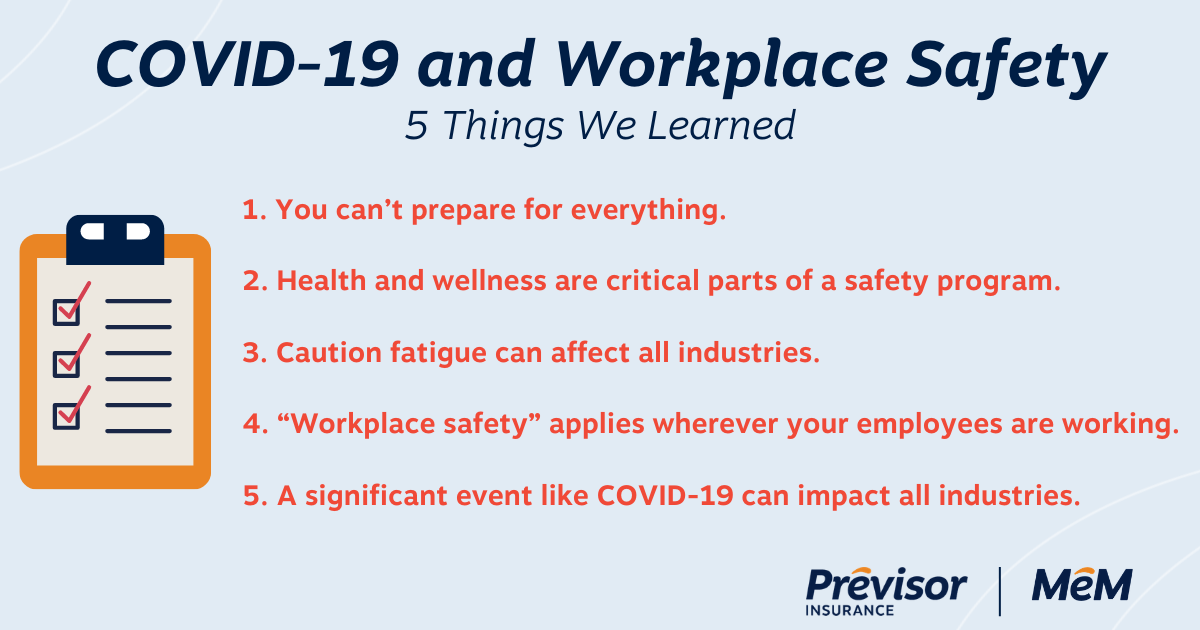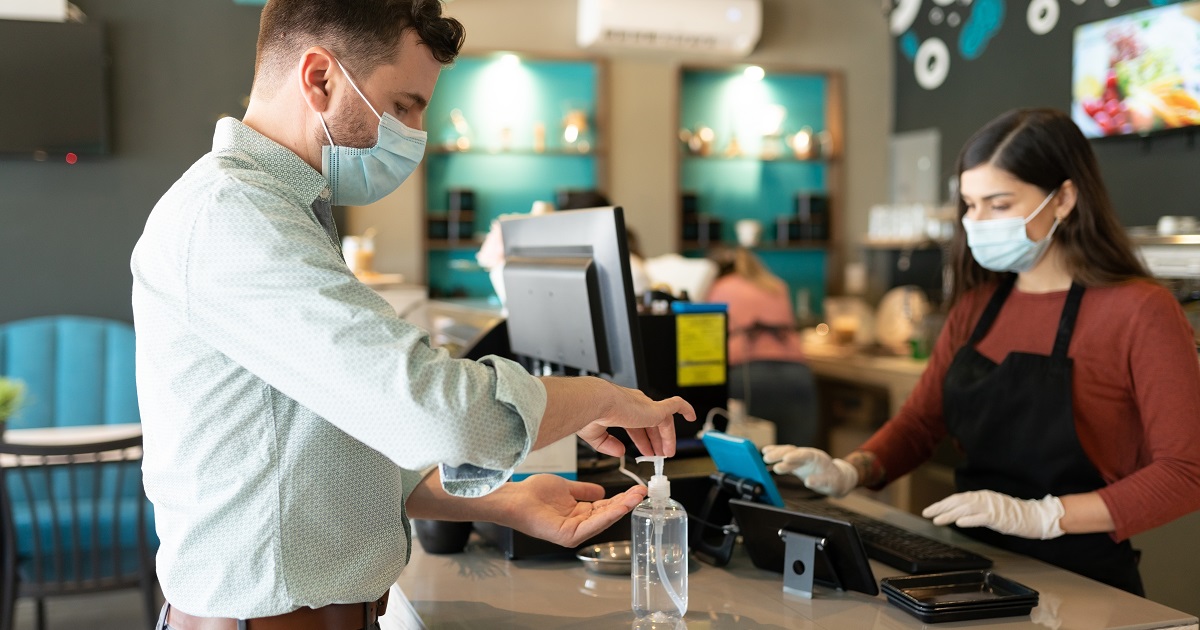For Media Inquiries
Contact Revee White, Director of Marketing and Communications at rwhite1@mem-ins.com or 573.499.4190.
The COVID-19 pandemic changed the way people think about workplace safety. For many, personal safety went from guaranteed to high-priority overnight.
At Missouri Employers Mutual, workplace safety is on our minds every day – but responding to COVID-19 led to new experiences even for safety experts like us. We learned these five important lessons during the COVID-19 pandemic.

1. You can’t prepare for everything.
One of the biggest lessons we learned during COVID-19 was the importance of flexible processes and frameworks when it comes to planning for workplace safety.
At MEM, we had a thorough disaster preparedness plan. Believe it or not, we even had a pandemic response plan! As a safety-focused company, we had our bases covered. However, no organization could predict or truly prepare for the challenges that COVID-19 introduced – and those challenges surfaced quickly.
Sometimes your company will face unexpected safety concerns. The only way to be “prepared for everything” is to build a safety culture so strong that your employees are ready to respond to the unexpected with safety as their top priority.
2. Health and wellness are critical parts of a safety program.
Many organizations have separate safety and wellness programs. Safety programs involve only certain employees doing traditionally “hazardous” work, while wellness programs, managed by HR, apply to everyone. However, safety and wellness are fundamentally connected. Any lines between these two areas quickly blurred during the COVID-19 pandemic.
Employees’ safety depended on their health. A health issue with a single employee suddenly jeopardized an entire workforce’s safety. The critical task of disseminating health information to everyone required safety and HR to work together. And as the pandemic dragged on, of course, organizations realized they also had an unprecedented responsibility to support employees’ mental health.
3. Caution fatigue can affect all industries.
When you’re exposed to a certain risk all the time, you can become desensitized to it. This is called caution fatigue, and COVID-19 taught us that it’s a real threat to a workplace safety program’s long-term success.
Most workplace injuries don’t result from freak accidents. They happen because employees become complacent and expect the workplace to be the same every day. When someone has used a table saw every day on the job for five years, they might stop actively thinking about the safest way to use the tool. It becomes easier to relax on protocol.
We also know that the success or failure of safety measures often comes down to the individual. During COVID-19, the effectiveness of wearing masks, washing hands, and social distancing required everyone to buy in. For this reason, it’s important to address caution fatigue in your workplace and ensure employees are following safety rules every time.

4. “Workplace safety” applies wherever your employees are working.
At the onset of COVID-19, millions of Americans suddenly became remote workers. Gathering in traditional workplaces just wasn’t safe anymore. Safety professionals quickly learned that employees working from home still risked work-related injuries – even if they were different than before. New safety challenges emerged, like ensuring employees had ergonomic home workstations and were protected from slip and trip hazards.
Working from home isn’t the only safety concern outside the office. In 2020, we saw more motor vehicle fatalities in Missouri than ever, even though fewer drivers were on the road. Safe driving remains a top workplace safety priority regardless of industry.
5. A significant event like COVID-19 can bring some industries to a halt – and ramp up others.
With the global impact of COVID-19, entire industries came to a standstill. Many employees in food service, hospitality, and travel were suddenly out of work with no idea when things would start moving again. The sudden halt was so pervasive that the NCCI created a new class code for furloughed employees. This was just one of many payroll questions that arose in work comp during COVID-19.
On the other end of the spectrum, supply chain disruptions put an immense strain on the trucking industry. Those employees, in particular drivers, began working overtime as millions depended on them for everything from food to hygiene supplies. For safety professionals, everyday controls like gloves, masks and hand sanitizer were suddenly in short supply.
Most organizations landed somewhere in between these two extremes. Regardless, almost everyone implemented new safety standards and found new ways of doing business.
Reflecting on your safety program
The COVID-19 pandemic changed our lives and challenged the way we thought about safety. It gave us a valuable opportunity to reflect on our workplace safety programs and ask ourselves questions like:
- What are the true goals of my safety program?
- How will my organization respond to unexpected safety challenges?
- Is my safety program comprehensive enough?
- Have I done everything I can to build a strong safety culture in my organization?
As safety professionals, we can use what we learned during COVID-19 to strengthen our safety programs and create a safer future for everyone.
Ready to take a fresh look at your workplace safety program? Check out this post on the Four Foundations of a Workplace Safety Program.